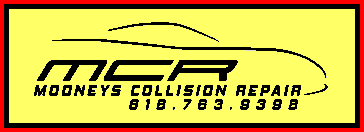
1. You can choose the body shop
Insurance companies can refer you to shops that they work with, but ultimately you can choose who does the work. Most insurance-recommended body shops are reputable and perform high-quality repairs, but there are a few bad eggs out there that cut corners to get the job done faster and cheaper. These shops will entice insurance adjusters with lower repair costs, but that could result in a shoddy repair. Before agreeing to get your car fixed at an insurance-recommended shop, do some research online by searching Yelp or other sites with small business reviews.
2. Avoid aftermarket parts
When you take your car in for repair, you should inquire about the replacement parts that are being used by the body shop. Body shops may use new original parts, used parts or aftermarket parts. While used parts were made by your vehicle manufacturer and perform as well as new original parts, aftermarket parts are often cheap imitations with inferior quality. These parts can corrode, rattle and ultimately diminish your car’s value.
3. Carefully examine paint match
All too often, you see cars on the road with body panels that don’t match in color. Matching a newly painted body panel to the rest of your car is a difficult challenge, and sometimes there can be a big, obvious difference in shade. When you pick up your car from the body shop, ask which panels are original and which ones were painted. Step back ten feet from the car and see if there’s a difference in color. If there is, there may be additional paint work necessary to get a better match.
4. Check warning lights
After an accident, there are a number of warning lights that may turn on in your dashboard. These can include the airbag light, the low coolant light, the check engine light and others. When you pick up your finished car, make sure all of the problems have been corrected and none of the lights are illuminated. Illuminated lights can indicate that your car’s on-board computer may need to be reprogrammed, or that certain electrical components need replacement.



